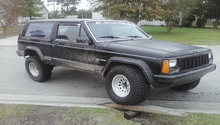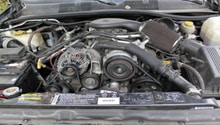Jeep Grand Cherokee 1999-2004: Why is My Car Misfiring?
Is your car misfiring? This problem could be caused by a simple, cheap component. Read on to learn how to diagnose an engine misfire in the Jeep Grand Cherokee.
This article applies to the Jeep Grand Cherokee WJ (1999-2004).
An engine misfire is when the engine stumbles for a short period of time, and then gets back its power. It could happen as you drive or when you're stopped. Even though it's something you can live with, it is annoying, but more importantly, it could affect other components in your Jeep Grand Cherokee. The culprit could be one of a few things. This article will shine a light on some of the potential causes for an engine misfire, and will give you the proper information to get your Jeep back to running smoothly.

Materials Needed
- Ratchet and socket set with extension
- OBD scanner
- Ohm meter
- Owner's manual
Step 1 – Check OBD codes
It can lead you to the issue.
Connecting an OBD scanner to your Jeep can save you the trouble of looking around. It could give you the exact code that will lead you to the problem. Note the code that appears on your scanner and compare it to the codes in your owner's manual. You can see a list of the codes here.
You don't need to buy a scanner, as you can rent one from most auto stores.

Step 2 – Check spark plugs and wires
They could be faulty.
The spark plugs and spark plugs' wires are important components in the ignition system, since they deliver current to the combustion chamber. If they are not giving enough current, your car can misfire. Using your ratchet, socket and an extension, remove one of the spark plugs. Check the tip for any signs of burns. If it's burnt, replace the whole set of spark plugs.
To check the spark plug wires, bend them to see if they're cracked. You can use the water method, in which you splash some water on them while the car is running. If you see any spark, it means they need to go.

Figure 2. Spark plugs, old vs. new. 
Figure 3. Spark wire test.
Step 3 – Check fuel injector
It could be faulty or leaking.
Too much or too little fuel in a fuel injected car can cause a misfire. Your fuel injectors can be tested using an ohm meter, which you can rent from your closest auto store. Take a reading on your ohm meter by placing two of its prongs on a fuel injector, then compare it to your owner's manual specifications.
Check for any fuel smell or visible leak around your fuel injectors; if you see any leak, then replace the injector to retain proper fuel pressure.

Step 4 – Check cylinder compression
It could have low compression.
When the air and fuel mixture fail to combust, the car misfires and all because cylinders have low compression. The best way to check these is to take it into an auto shop. They have the equipment to test the cylinder compression.
Damaged piston rings or damage in cylinder walls can be the cause of the low compression.

Related Discussions
- Car Misfiring - CherokeeForum.com
- Why is My Car Misfiring? - CherokeeForum.com






